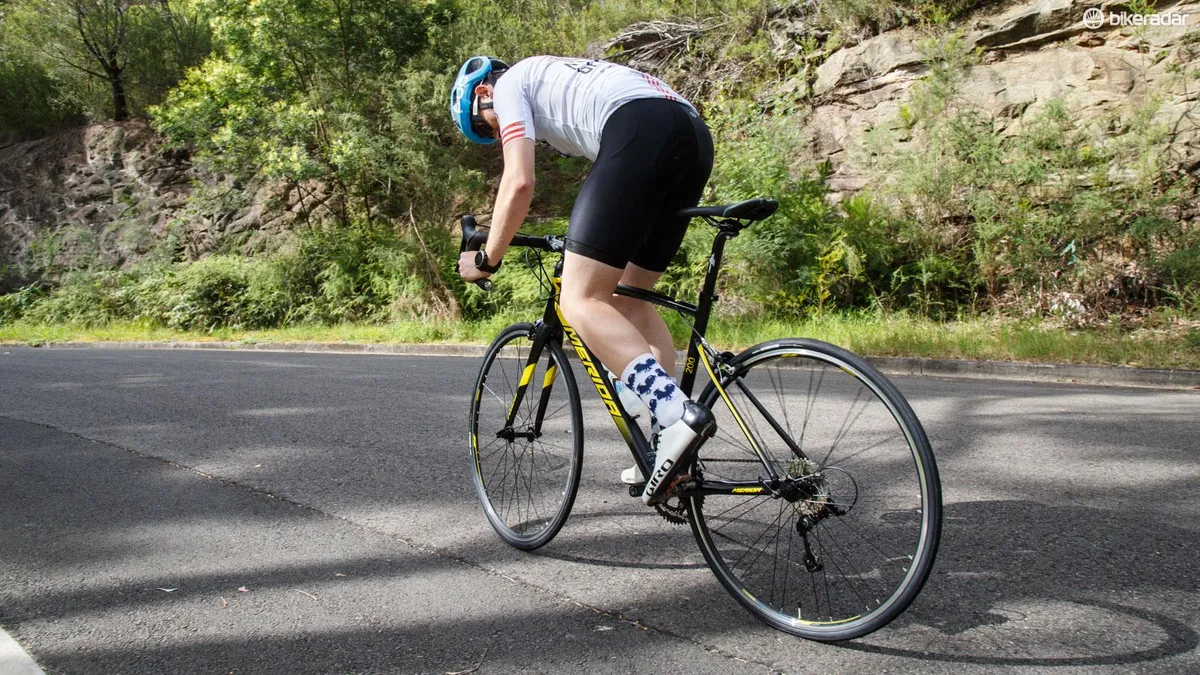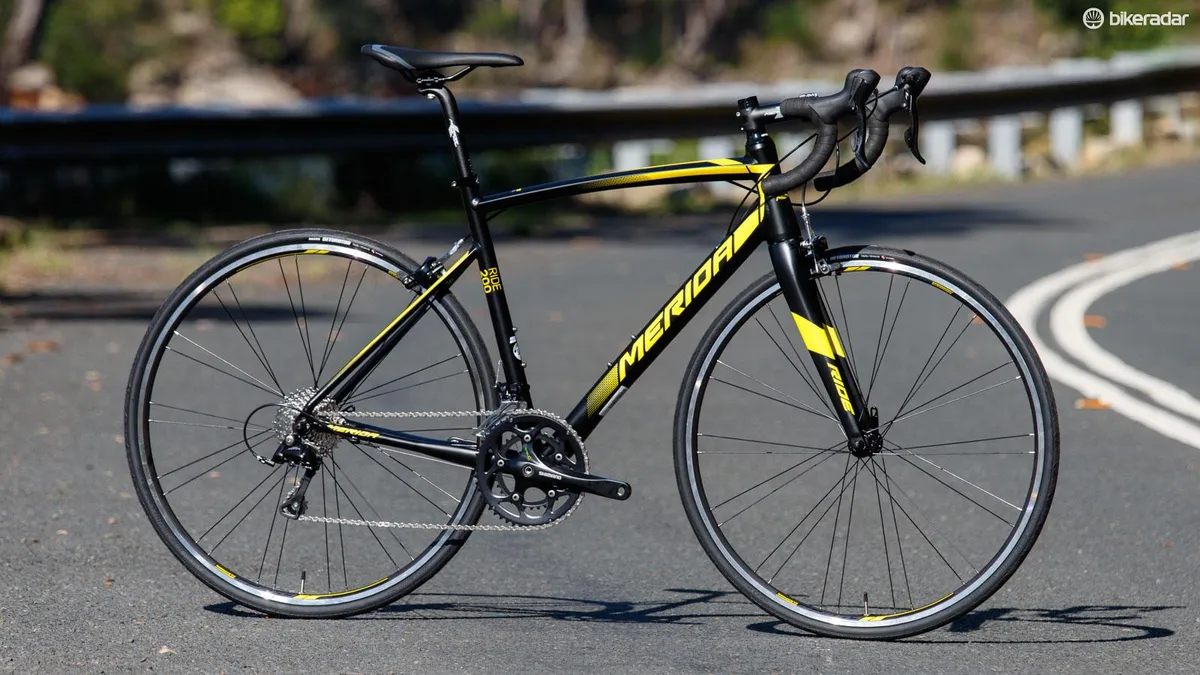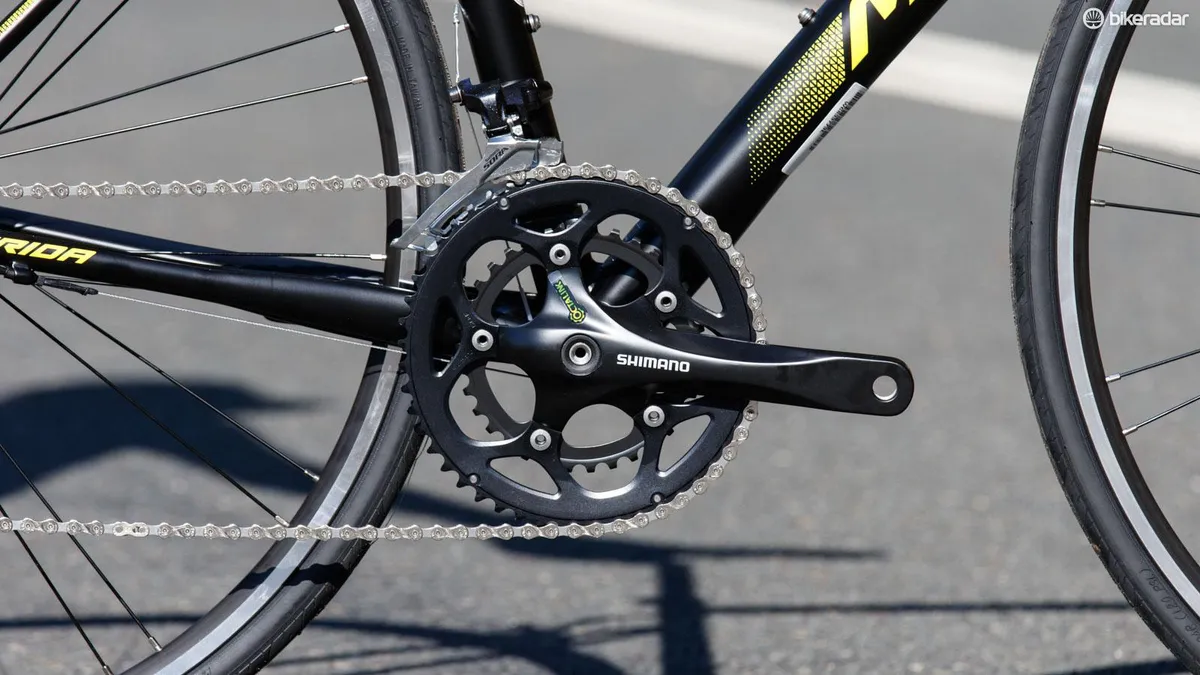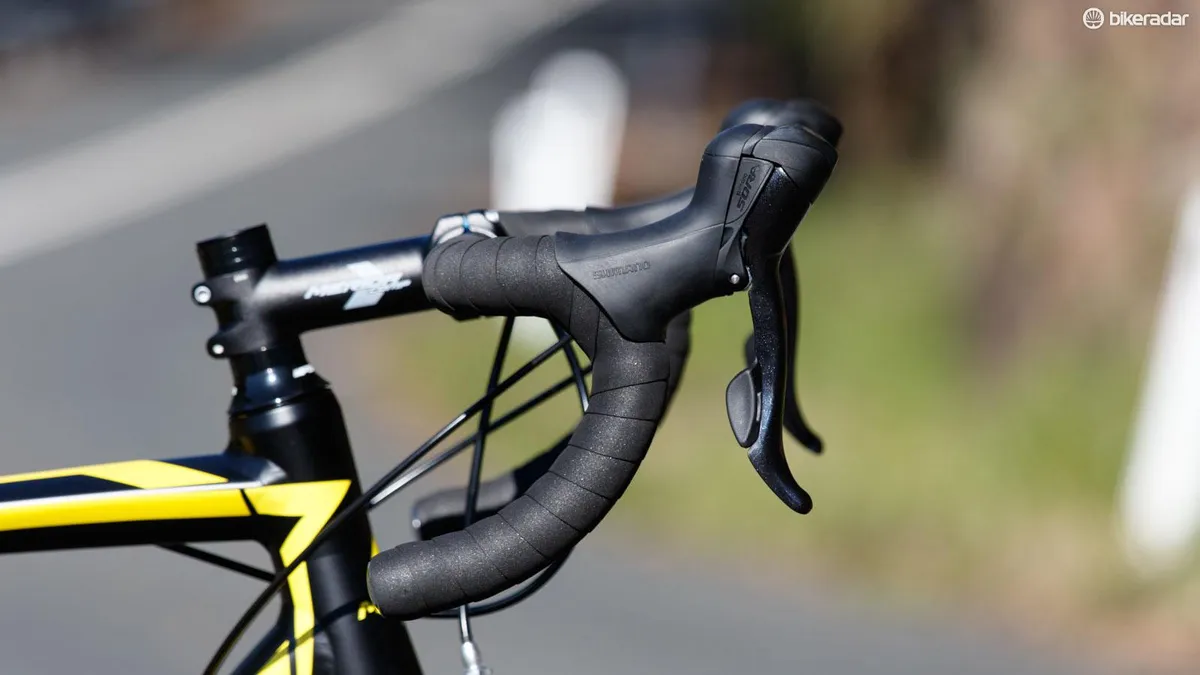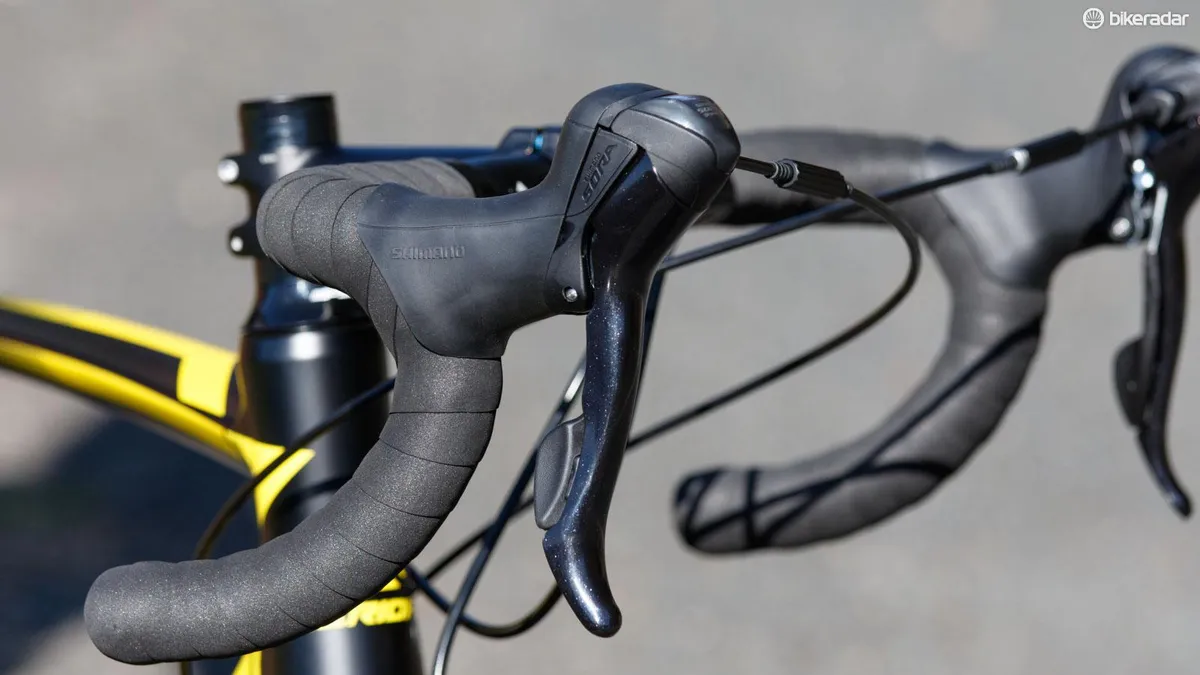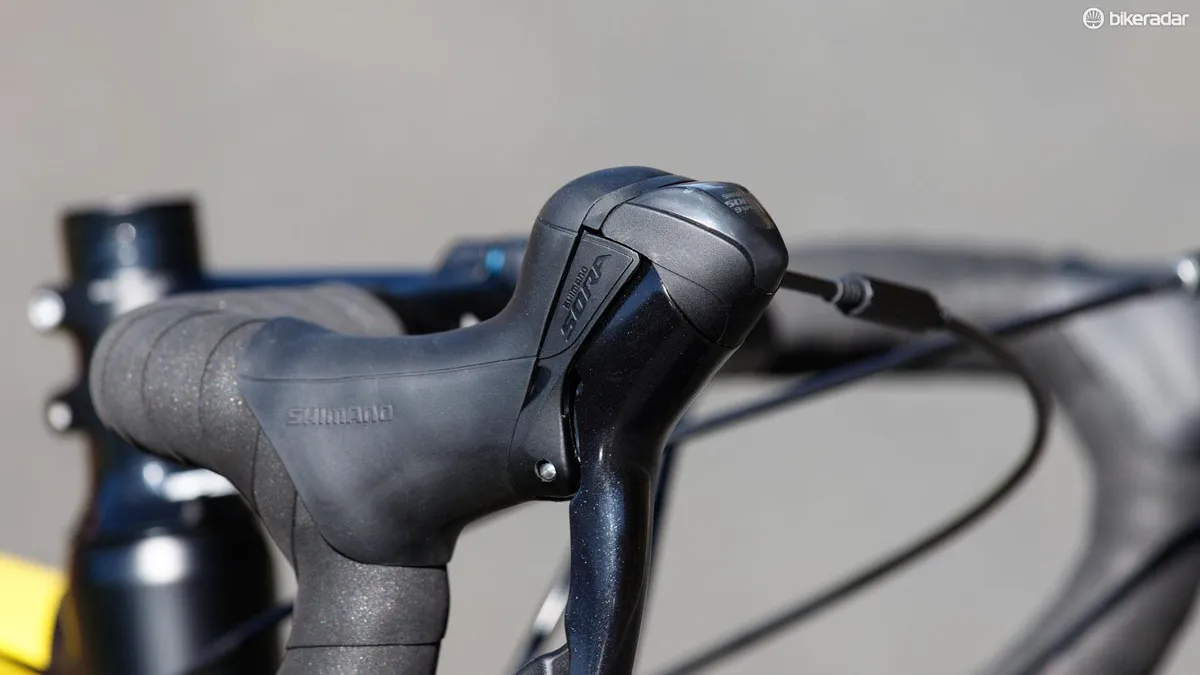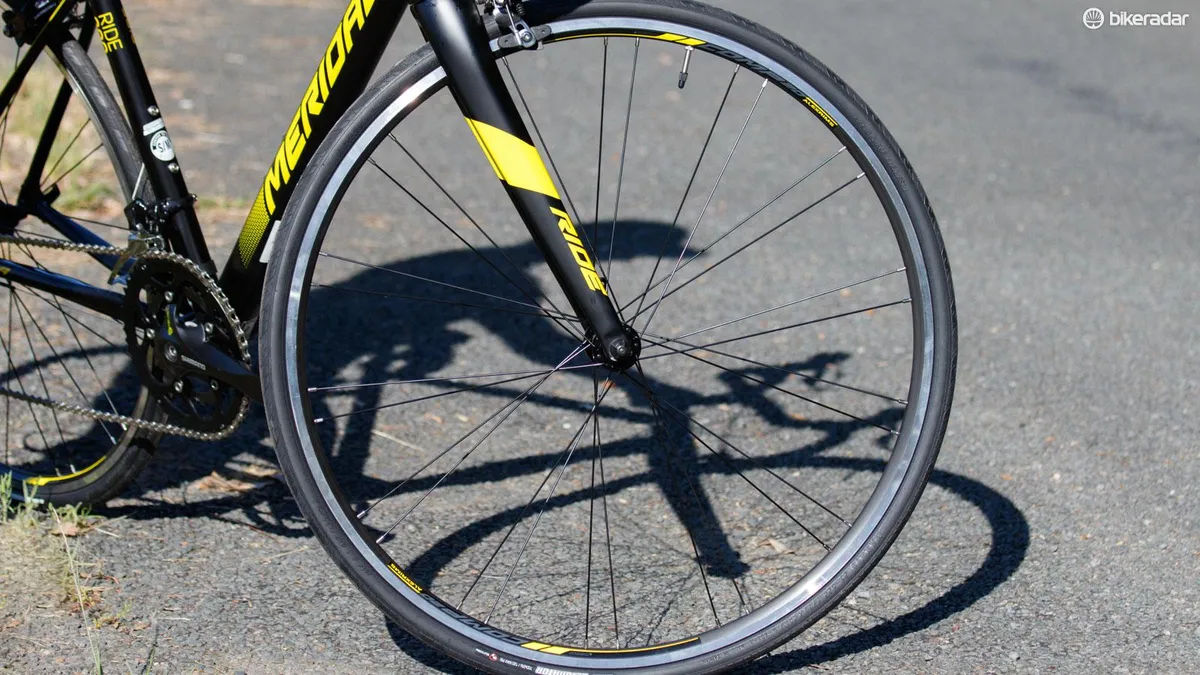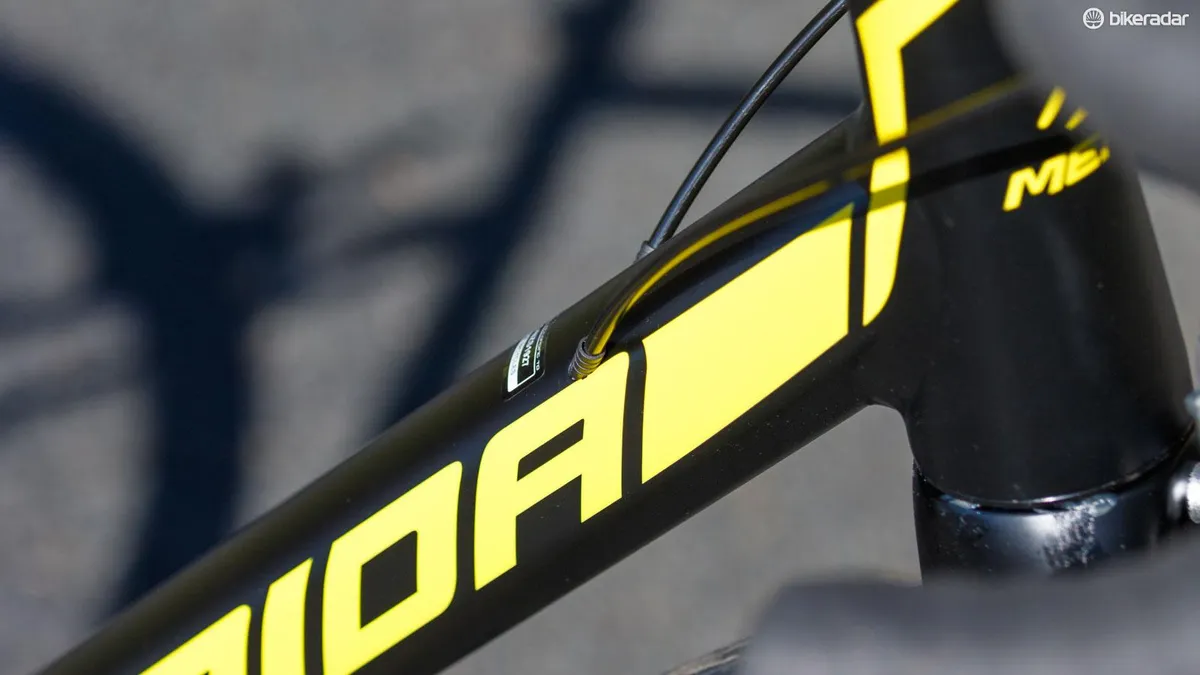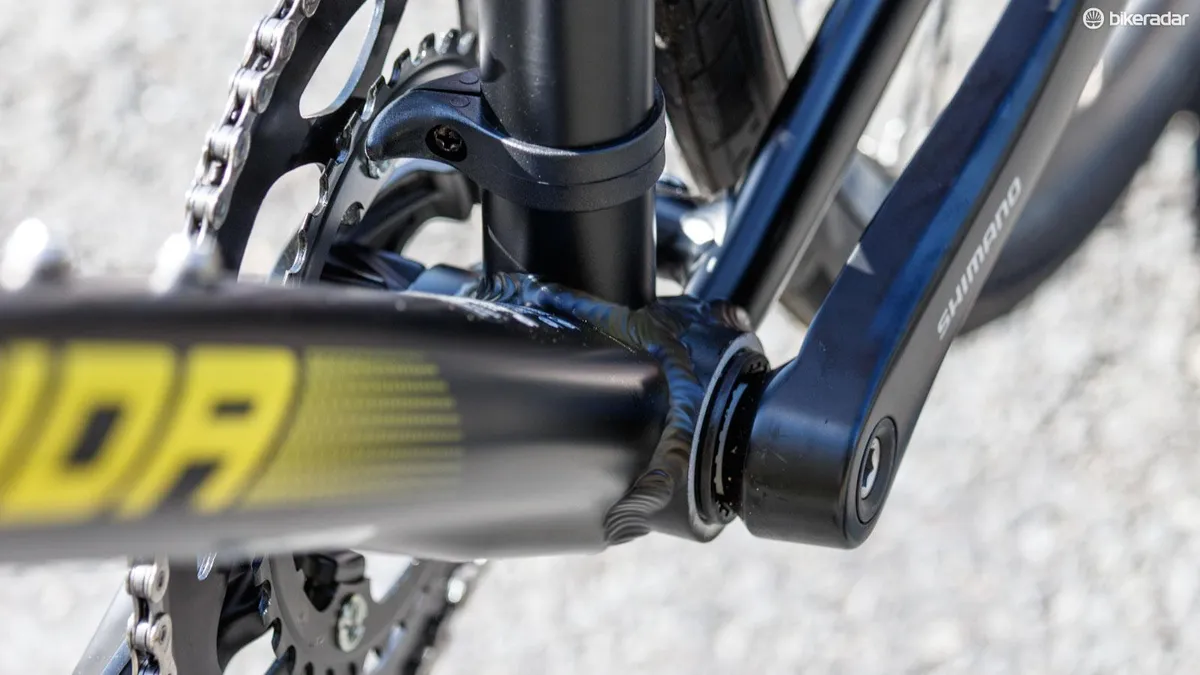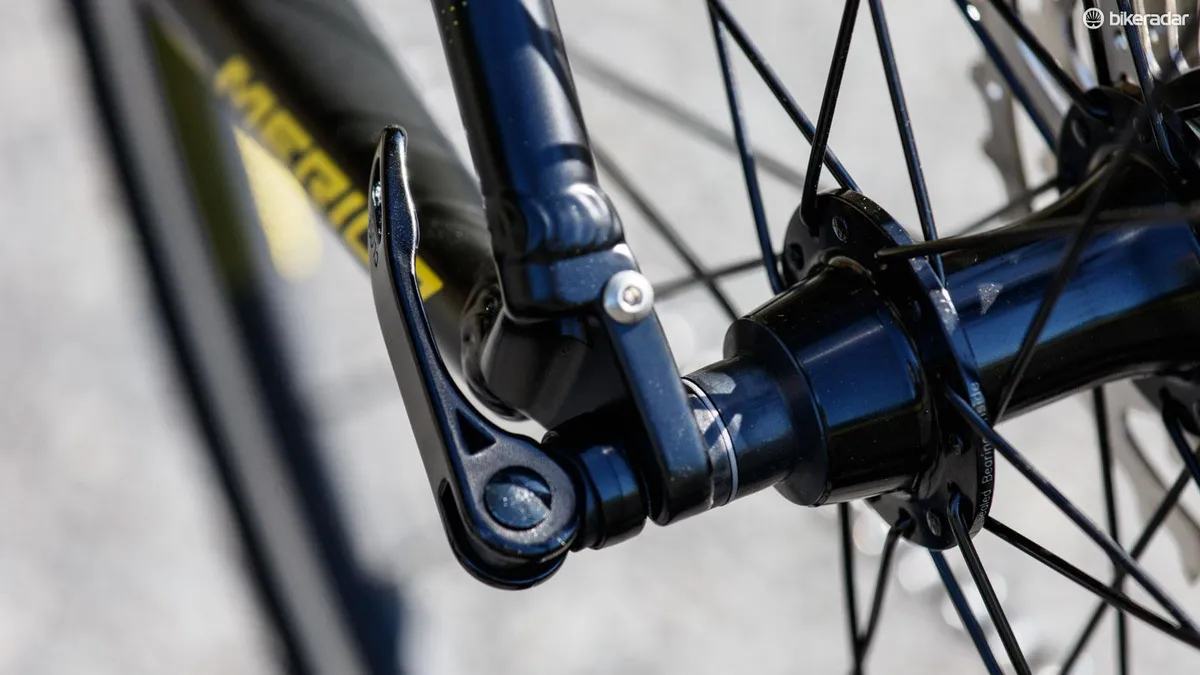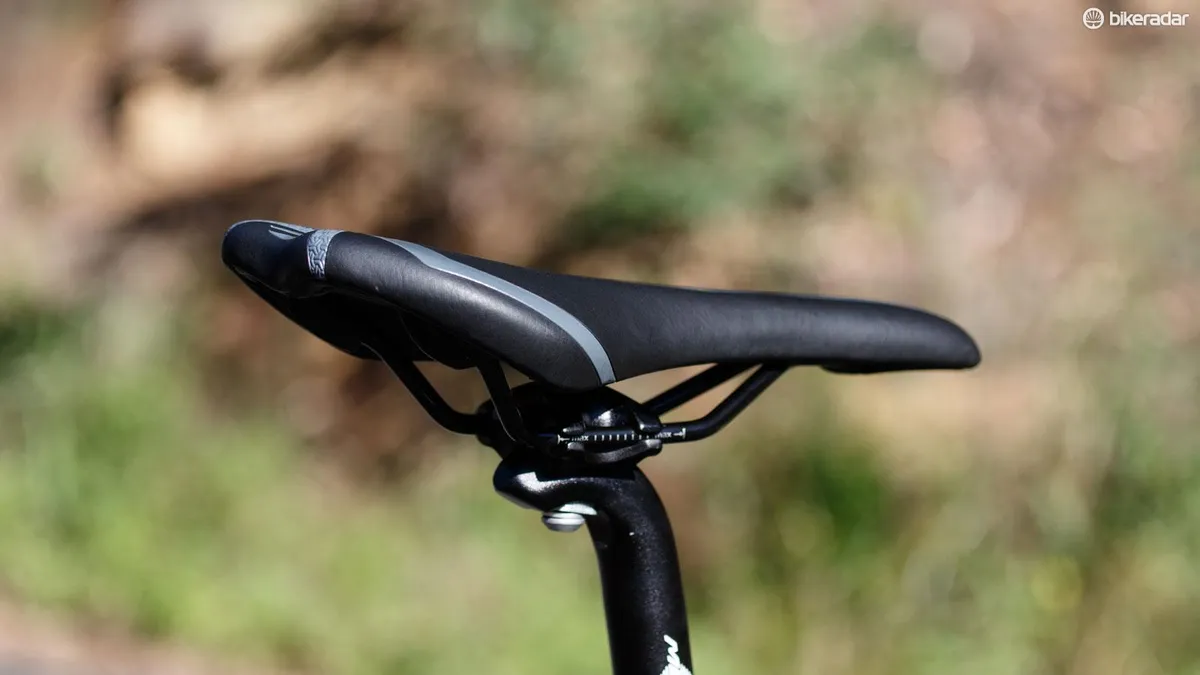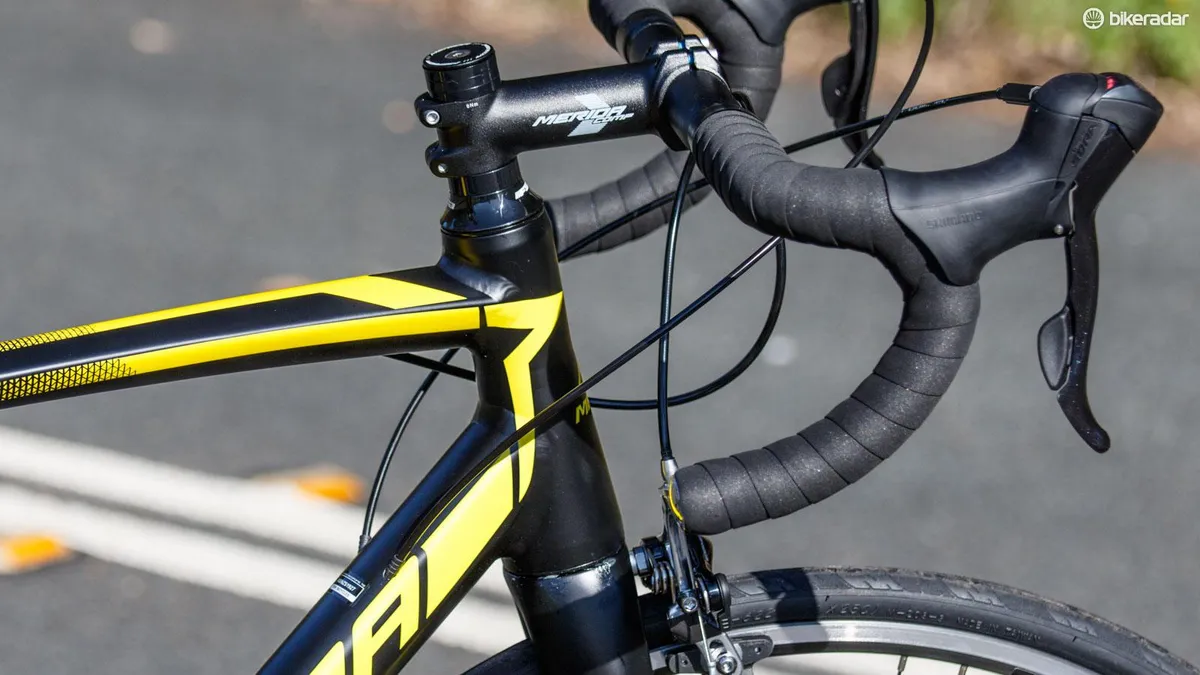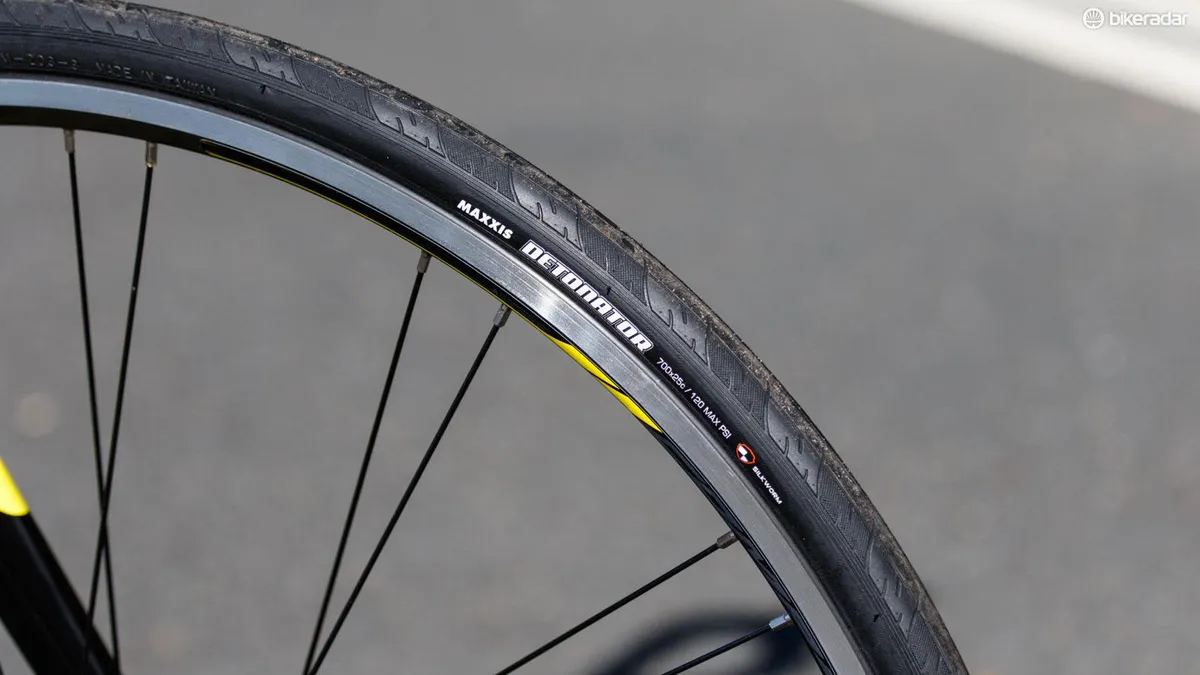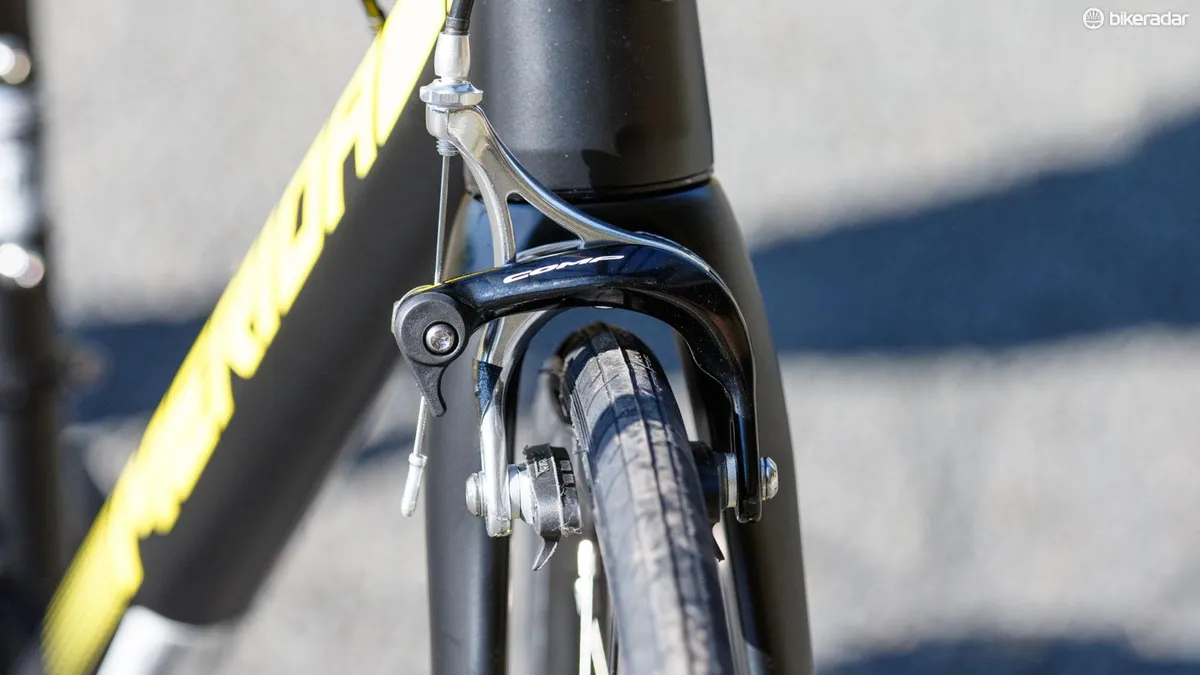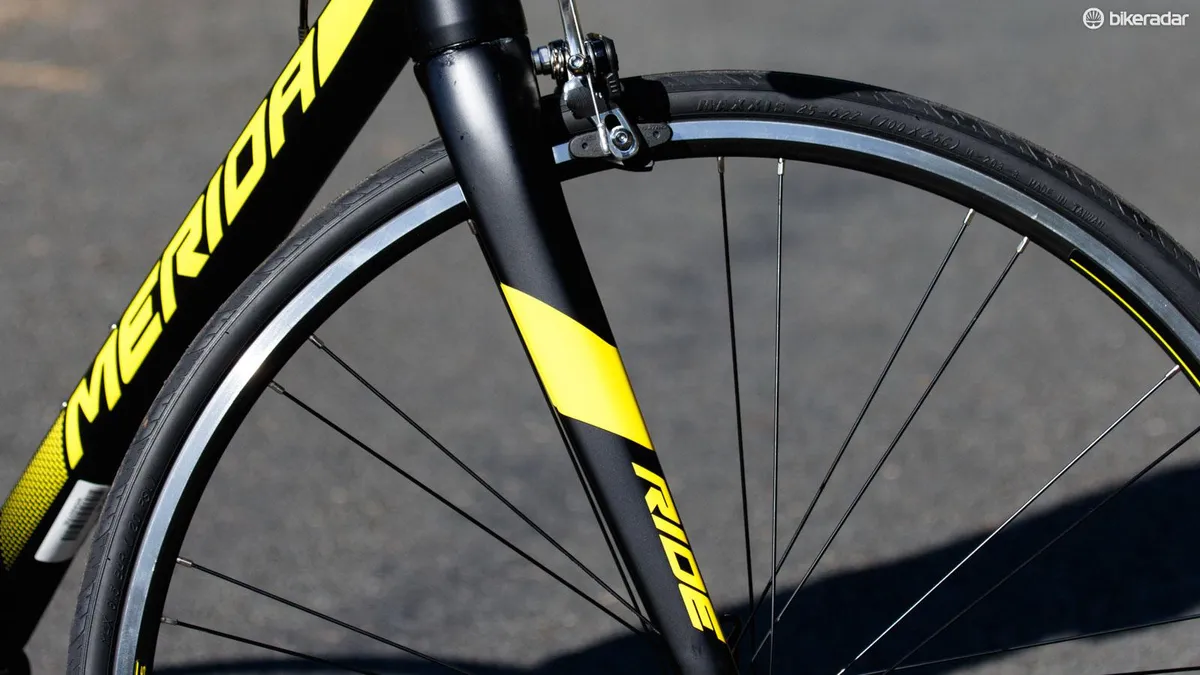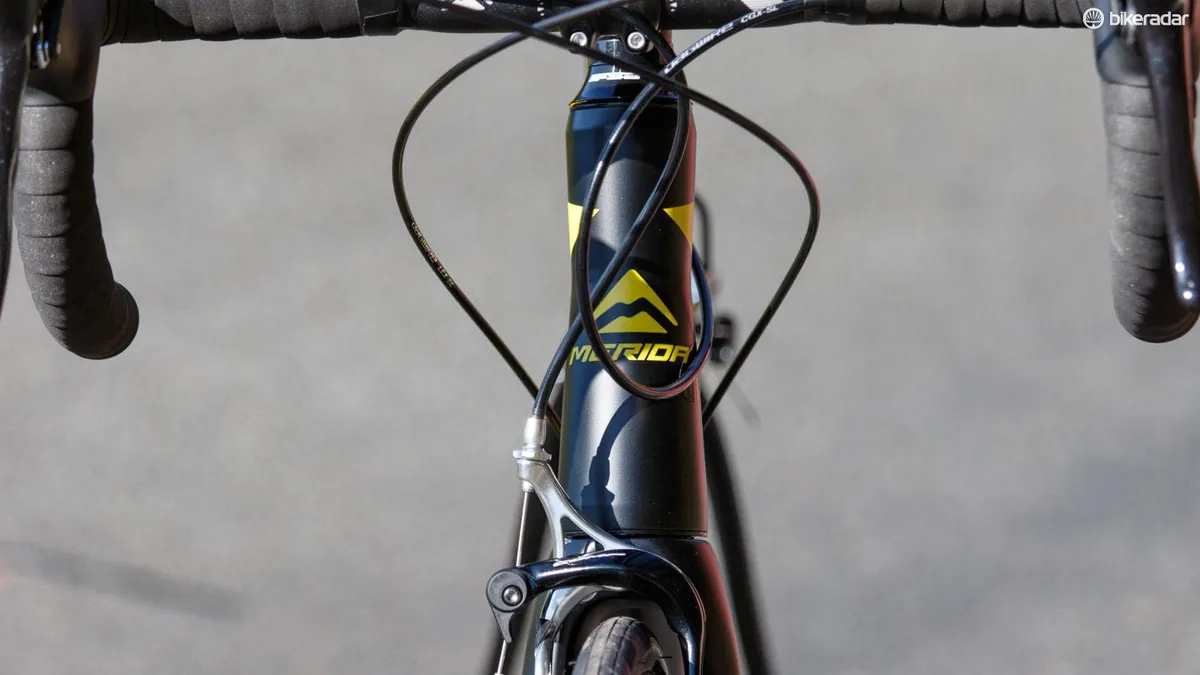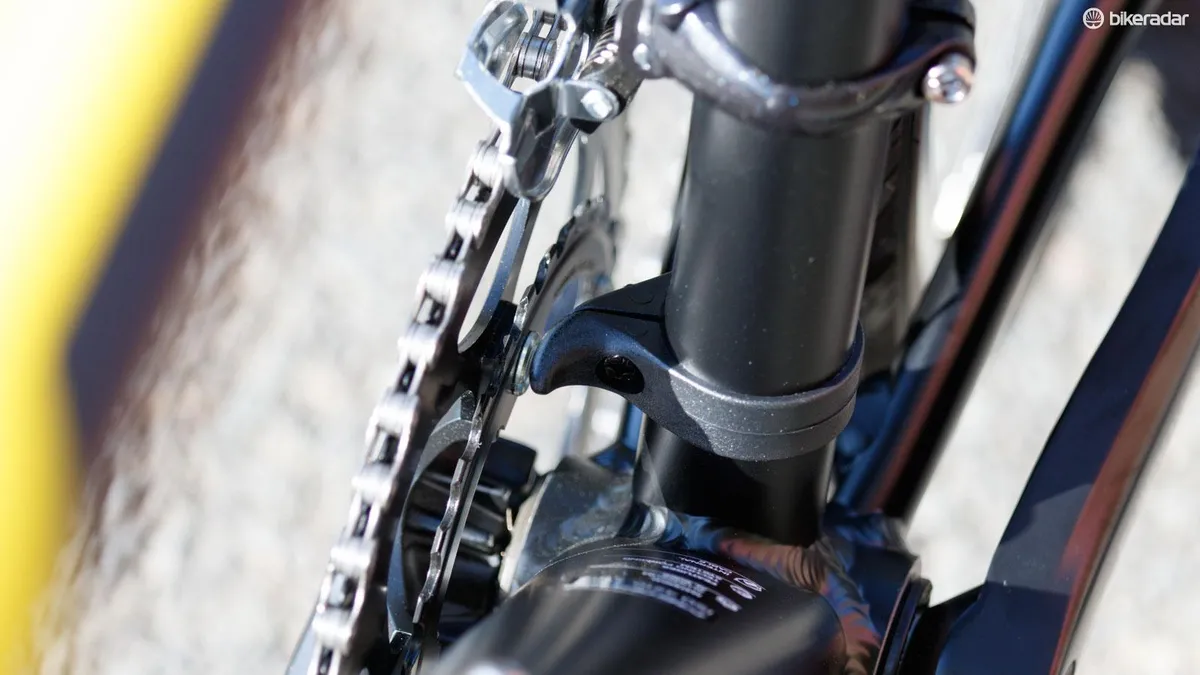As a Taiwanese mega-manufacturer, Merida possesses reams of knowhow and buying power. With this, we often expect to see high value on offer from the brand.
We tested the 2016 Merida Ride 200 against five other big-brand budget road bikes. If you're reading this in the UK, the Ride 200 isn’t offered at the time of writing – but the models directly above (Ride 300) and below (Ride 100) are, both of which share the same frame, fork and many components in common. For those in the United States, the Merida brand is unfortunately not available at all.
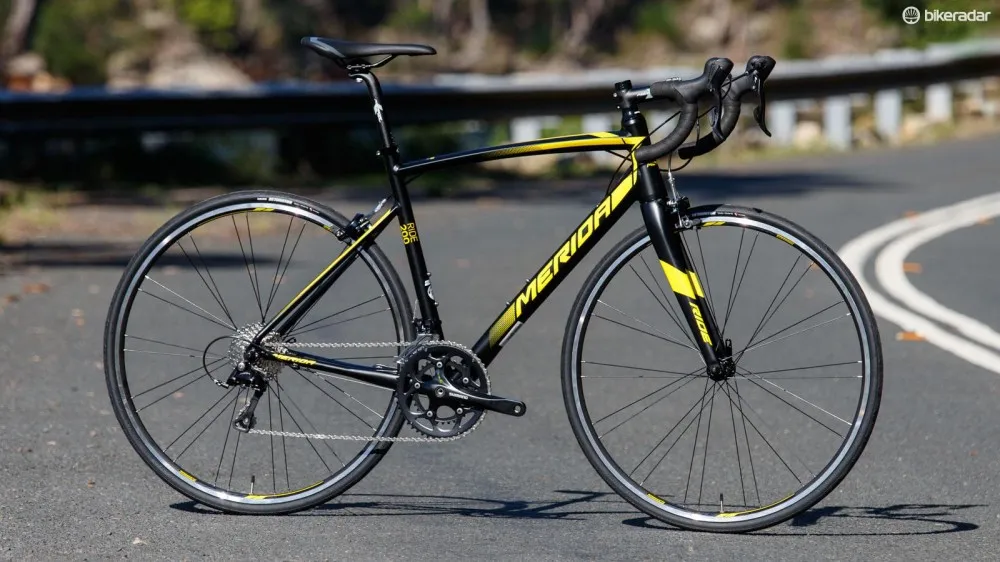
The 2016 Merida Ride 200
Upright, comfortable – and no racer
The Merida Ride 200 offers by far the most upright ride position of the six bikes we tested, and is one suited to the rider seeking an ultimately relaxed position. For those with pre-existing neck or back issues, this position could prove ideal, and won’t call on needing to further adapt the bike to your needs. This fit reminds us of a sporty flat-bar road bike but, of course, with drop bars.
Related: Best entry-level road bikes: US/Aus / UK
However, before you go seeking a relaxed riding position, it’s worth considering the downsides. First, being so upright places you in the wind – something performance road racing bikes aim to reduce. Another issue is that a tall position can close off the use of certain muscle groups, for instance by preventing you from activating your glutes in the pedal stroke.
Then there’s the effect on handling that happens when you’re placed tall on the bike. With a higher centre of gravity, the bike can feel top-heavy and awkwardly tip into corners. Additionally, your weight is further from the wheels, and in some situations you need this weight to help drive the wheels into the ground and promote traction.
The Ride 200 is thankfully not so upright that it can’t corner safety. Dropping your elbows does plenty to overcome this and help steer the bike sharply through tight bends. Here, the bike is balanced and stable, although it does lack ability to quickly switch to a different line. The bike holds its own on high-speed descents, and promotes confidence to push the top-speed numbers high and higher.

That's what we call a long head tube
This slower steering means those with speed pursuits should simply look elsewhere. The 17cm long (and it is long) head tube of our 52cm sample means a lower handlebar position is near-impossible to achieve, just be warned.
While the geometry may not be designed for out-and-out speed, the frame and fork are impressively stiff and waste little energy. It’s most noticeable at the bike’s front end, where a tapered head tube holds the quality full-carbon fork. Out back, a compact rear triangle gives a solid structure for quick acceleration.
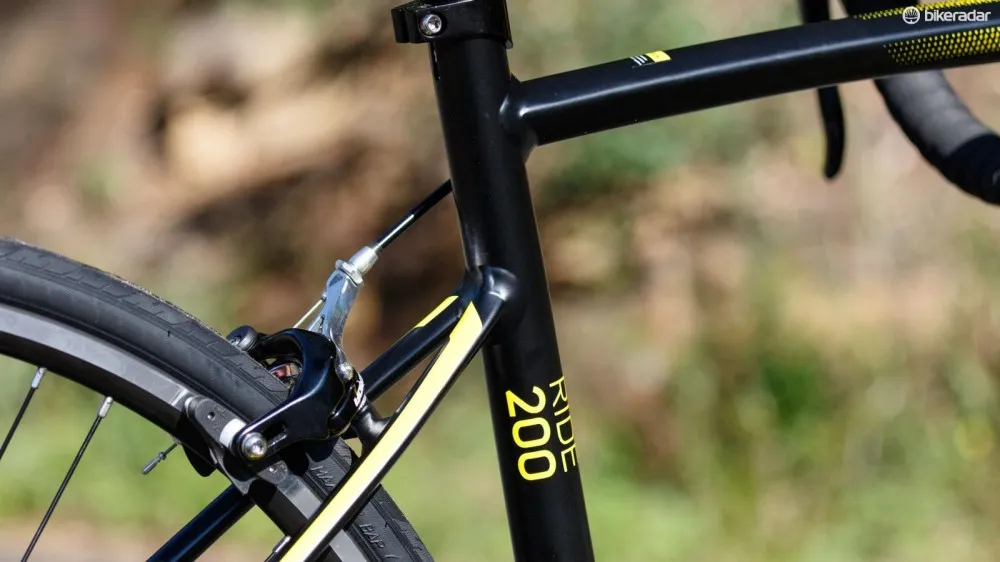
Some nice frame detail here
This rear triangle features thin seatstays that connect with the bike’s seat tube lower than on any other we tested. Add 25c tyres and the ride is one of the smoother – though not the smoothest – of the bunch. You’ll still feel it when the road surface is really poor, but the Merida Ride certainly numbs minor bumps and takes the edge off larger hits.
Class-leading frame crossed with cost-cut components
After Giant Bicycles, Merida is the second-largest bicycle manufacturer in the world and is a master of aluminium manipulation. With this, the Ride’s frame is one of the finer among our six test machines, showing plenty of knowledge, higher-end features and a carbon-like aesthetic not expected at the price.

Note the tapering shape. That's a premium feature right there
Such premium features include the smoothed-off welds, internal cable routing and 1.5in to 1 1/8in tapered head tube. That head tube plays host to a full-carbon fork, which is a step above the hybrid alloy/carbon forks of most bikes at this price. Found in more expensive models too, the main advantage to a full carbon fork is how it reads on the scales.
At the rear, there are stealthily executed rear fender mounts (none out front) for those looking to use the Ride in foul conditions. However, the hidden nature of these means your choice of add-ons may be more limited.
Where the frame clearly shows great value, a few of the component choices aren’t as giving.
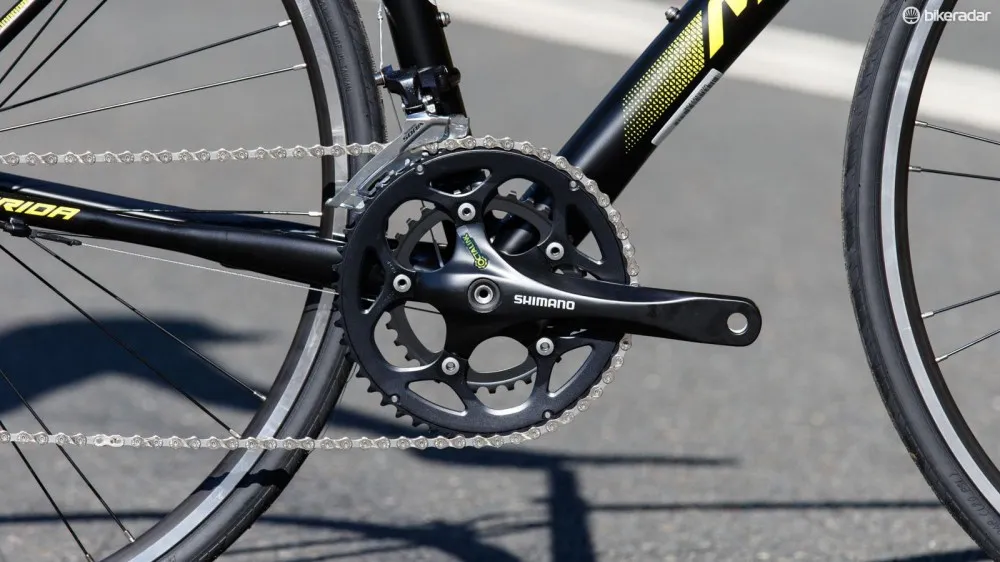
The front shifting is a little 'meh'
Most notable is the basic Shimano Octalink crank mixed into the Shimano Sora nine-speed gearing. While the crank bears the same brand name, it's a relative weak link – and this bike had the slowest front shifting of all six bikes tested. There’s also more flex than with pricier cranks, something that can be heard as the chain rubs the derailleur in hard sprints.
Despite that shifting lag, the rest of drivetrain leaves no cause for complaint. It’s the same shifter and derailleur setup found on the other bikes tested, and does just as they should once correctly set up. One thing that none of the other bikes have is the plastic chain catcher on the inside of the frame to prevent drops. It's a nice touch.
For bikes of this level, we’re big fans of wide-range gearing and the Merida’s 11-32t cassette is as good as it gets. Add in the compact front crank and you have the gearing to tick away at the longest, steepest and most overwhelming climbs.
Once you're accelerating down the other side though, or indeed racing on the flats, slowing the Merida down can feel a little uneasy with the basic rebranded Tektro brakes. The firm brake blocks lacks bite on the rims, meaning so braking power is not the Ride’s strong suit. Swapping out the brake pads is sure to help, but upgrading the brake calipers is the better (although more expensive) fix here.
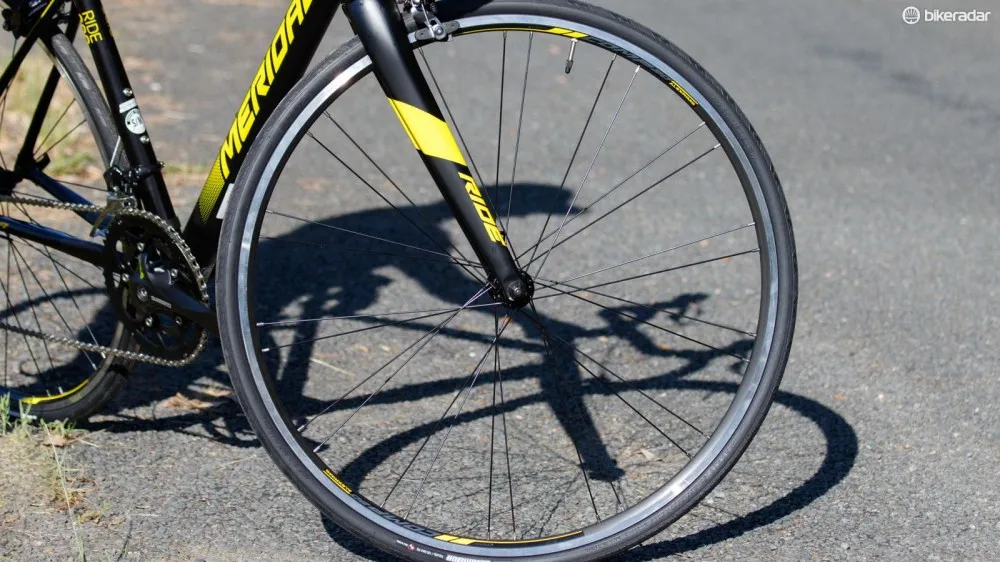
The wheels are fine, but there's no need for the fancy spoke pairing
Looking at the wheels, and the twin-spoke pairing would lead you to believe these are some special hoops. Sadly, the reality is that such a spoke setup doesn’t do much for wheel strength or weight savings.
Sitting at the centre, the sealed bearings hubs are a nice touch and will roll smoothly in the long term. However, the rims measure in at 18.90mm wide – that’s relatively narrow by modern standards and will do little for ride quality.
Offering reasonable grip and puncture resistance, the Maxxis Detonator 25c tyres are however well suited to the bike. While they’re not the fastest rolling treads going, they’re dependable in a range of conditions.
Finally, we come to the touch points. Merida has done well here, supplying components that are comfortable and of reasonable quality.
The saddle may be flat and thinly padded, but its generous width makes it one of the most comfortable on test. The seatpost holding the saddle though is one of the cheaper ones we came across, offering a single bolt that needs to be torqued to spec in order to avoid the saddle angle slipping.
Conclusion: a comfortable ride, but it’s a cruiser among sporty rivals
The Merida Ride 200 is certainly worth a look if you’re seeking a comfortable and upright road bike. It fits somewhere between a flat bar road bike and a race bike, and can feel a little confused (if not boring) compared with its sportier peers.
That said, there are plenty of riders where such a fit is ideal and you’ll be happy that Merida has an option for you where so many other brands don’t. Before taking this one out on the road, however, consider upgrading at least the brake pads and be aware you’ll need to back off the power before you actuate a front gear shift.
Click through the gallery up top for a closer look at this bike. If you haven't already, be sure to read the full 2016 budget road bikes grouptest here.
null
